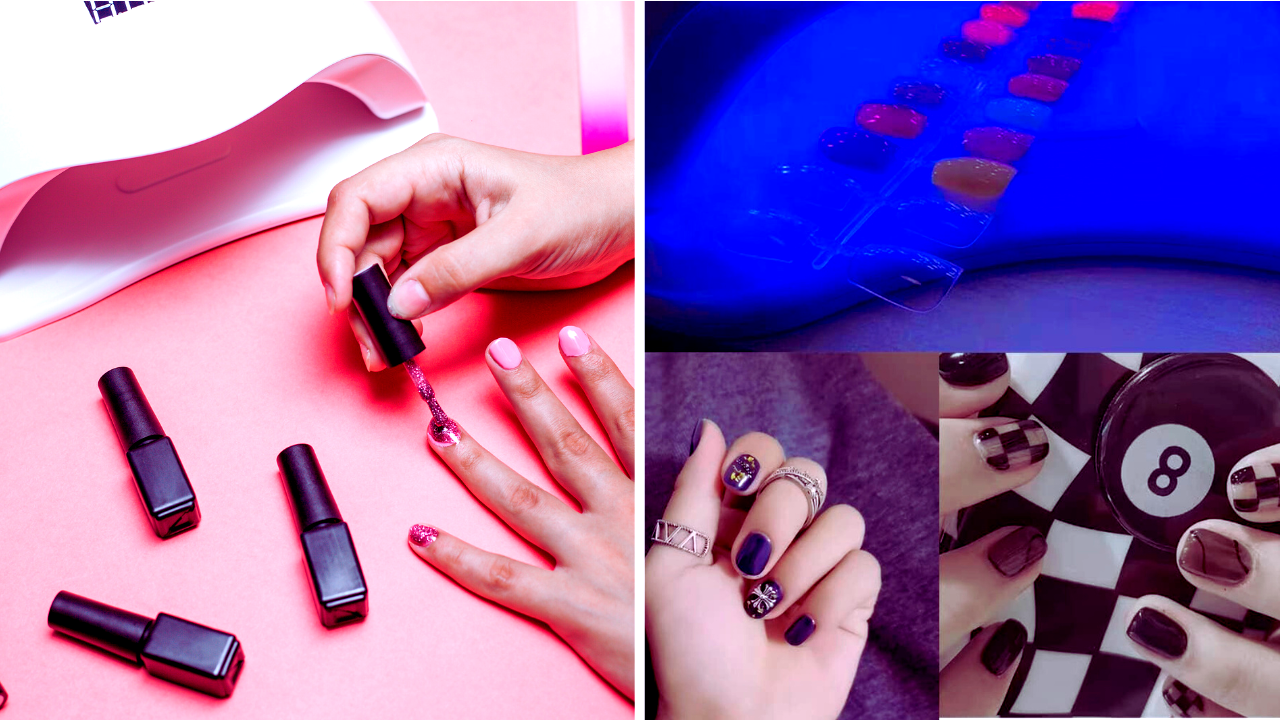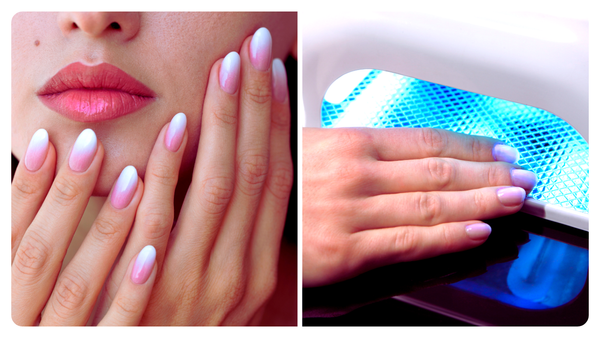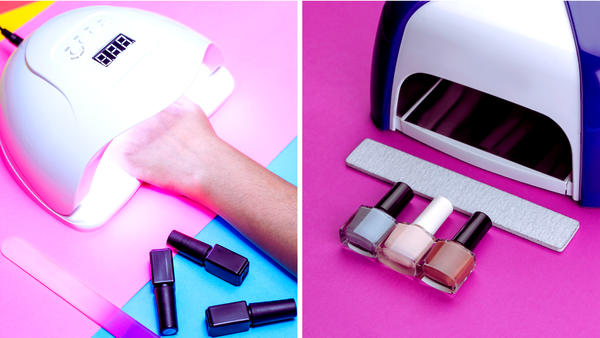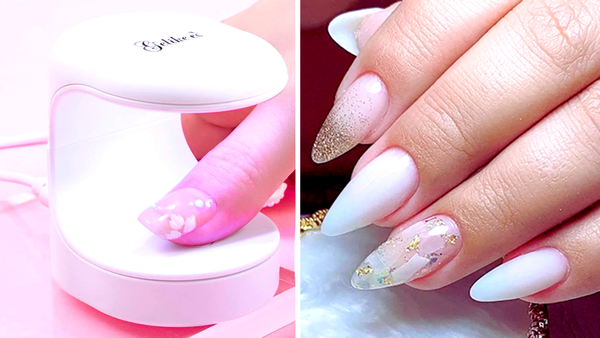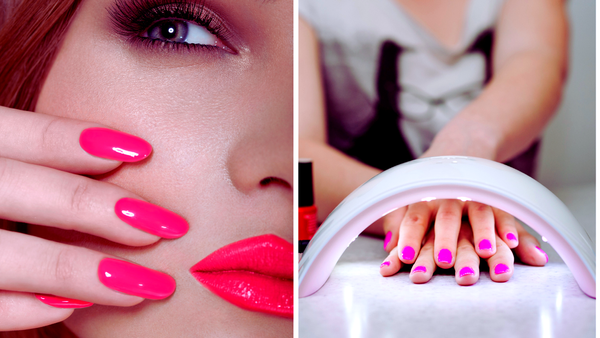Key Takeaways:
- UV Exposure: UV nail lamps emit UVA rays, which can contribute to skin darkening and increase the risk of skin damage.
- Safety Measures: Wearing protective fingerless gloves and applying sunscreen can mitigate the risks of UV nail lamps.
- Alternative Options: LED lamps are a safer alternative, offering faster curing times with less UV exposure.
Introduction to UV Nail Lamps and Skin Concerns
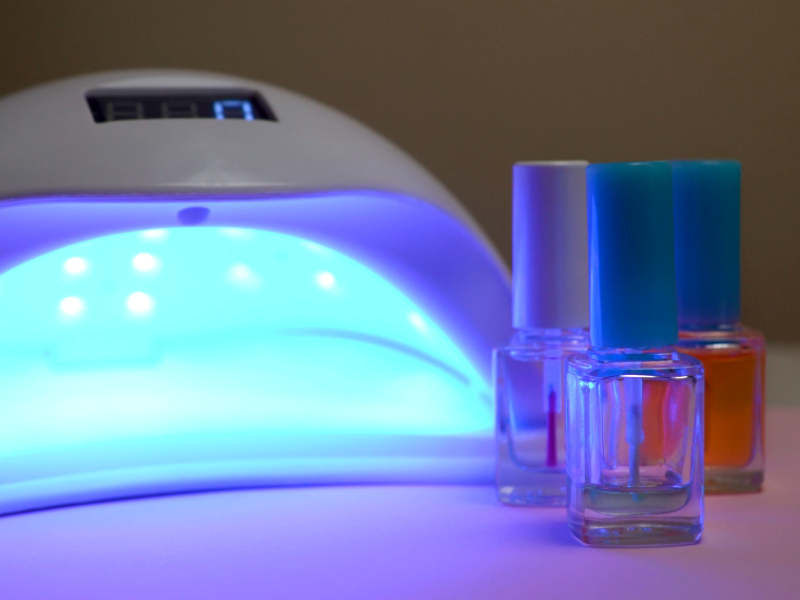
Gel manicures, particularly those involving gel nails, have become a staple in beauty routines, offering long-lasting and glossy finishes that traditional polishes can’t match. Central to the allure of gel nails is the use of UV nail lamps, which cure the gel polish through the emission of UV light. However, this practice has raised concerns about skin darkening and the potential risk of skin cancer due to UVA exposure from these devices. Understanding the interaction between UV light and skin is crucial for anyone regularly indulging in gel manicures.
Understanding UV Light and Skin Interaction
UV nail lamps primarily use ultraviolet light, emitting UV rays that fall in the UVA spectrum, to cure gel polish. This light, primarily consisting of UVA exposure, penetrates deeper into the skin compared to UVB rays. Repeated exposure to UVA rays can lead to premature aging, DNA damage, and an increased risk of skin cancers. The intensity and frequency of exposure during gel manicures raise questions about the potential skin damage and darkening effects associated with these devices.
The Science Behind UV Exposure and Skin Darkening
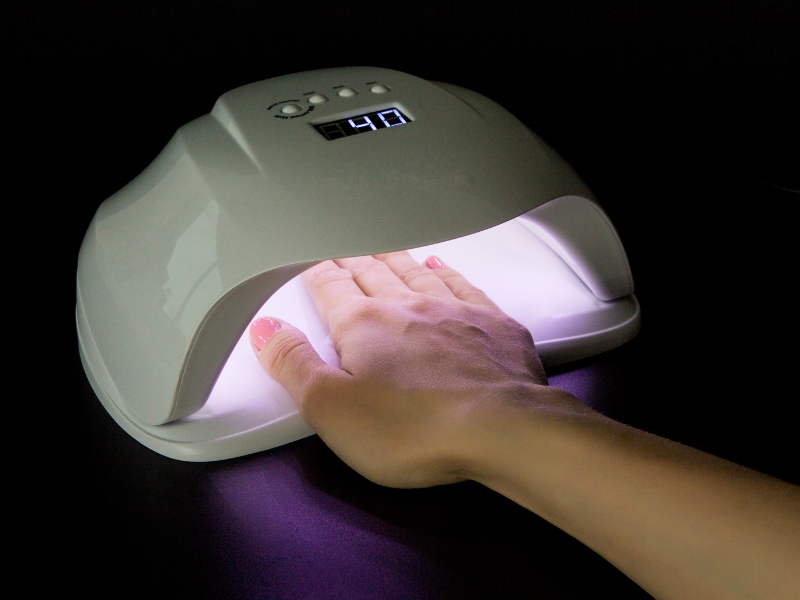
When skin is exposed to UV radiation from nail lamps, it reacts by producing more melanin, the pigment responsible for skin color, as a protective response. This process can lead to temporary or permanent skin darkening. Moreover, a study in JAMA Dermatology highlighted concerns about the skin cancer risk, particularly when two women developed non-melanoma skin cancers on their hands, speculated to be linked to UV nail light exposure. The connection between UVA exposure, skin damage, premature aging, and the potential skin cancer risk raises significant concerns. Although direct causation wasn’t established, this scenario underscores the need for caution and further research into the safety measures to minimize the risk.
Long-Term Effects of UV Nail Lamp Usage
When discussing whether UV nail lights darken skin, it's crucial to consider the long-term effects of repeated exposure. Frequent visits to the nail salon for gel manicures involve repeated exposure to UV lamps, which can cumulatively increase the risk of skin damage. Studies suggest that the UV radiation emitted from nail lamps can penetrate the skin deeply enough to cause damage to the DNA of human cells, potentially leading to premature aging and increasing the risk of skin cancers. This repeated UV exposure is similar to the effects of regular tanning beds, which are well-documented for their skin health risks.
Moreover, the type of UV light used in these lamps, primarily UVA rays, is much stronger and more deeply penetrating than UVB rays. This makes the skin more susceptible to long-term damage. Dermatologists often equate the intensity of these lamps to that of direct sunlight at peak hours, suggesting that even short sessions under a UV nail lamp could be more harmful than previously anticipated. The cumulative effect of these exposures can be significant, making it essential for regular users of gel manicures to take protective measures seriously.
Impact of UV Nail Lamps on DNA Integrity
UV nail lamps, commonly used to cure gel manicures, emit UVA rays, which are known to penetrate deep into the skin and affect the DNA of human cells. Studies, including those published in sources like JAMA Dermatology, suggest that repeated exposure to UVA radiation can lead to DNA damage, which is a precursor to skin cancers. The concern is not limited to the skin's surface but extends to the lower layers where significant biological processes occur. This raises questions about the long-term safety of frequent gel manicure enthusiasts who rely on UV nail lamps for quick drying.
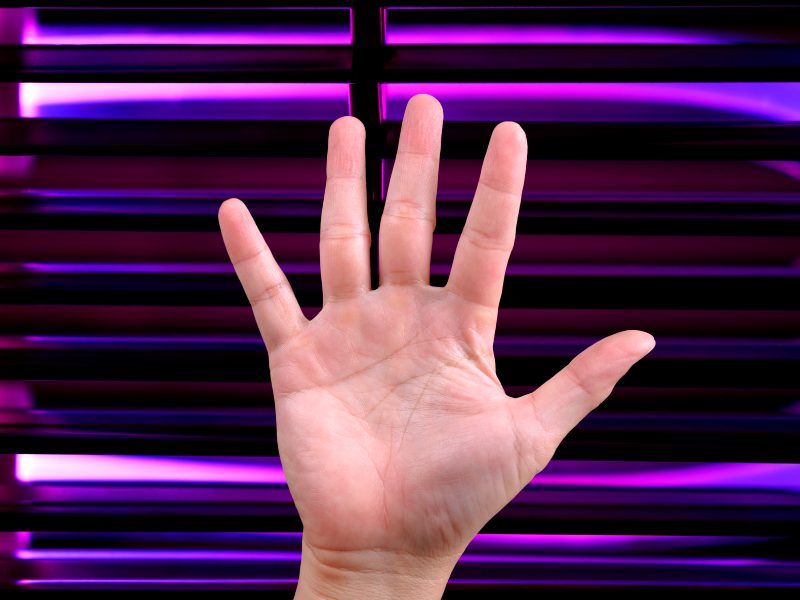
The intensity and potential risks associated with UV nail lamps are often compared to those of tanning beds, known for their high risk of skin cancer. While UV nail lamps operate on a smaller scale, the cumulative effect of repeated exposure can be significant. Dermatologists caution that the UV radiation from gel nail lamps can be several times stronger than the midday sun, depending on the proximity and duration of exposure. This comparison highlights the need for precautions such as wearing sunscreen or fingerless gloves to minimize direct UV exposure during gel manicure sessions.
Advances in Nail Salon Safety and Client Health
Innovations in Nail Salon UV Safety
In response to growing concerns about the risks associated with UV nail lamps, the salon industry has seen innovations to enhance client safety. One such advancement is the development of LED lamps, significantly reducing the time needed for curing gel polish, thereby decreasing UV exposure. Additionally, some salons have started integrating special bulbs that emit less harmful UV rays, and more studies are being conducted to explore further protective measures. These innovations reflect a proactive approach in the nail salon industry to mitigate health risks while maintaining service efficiency.
Educating Clients on UV Exposure Risks
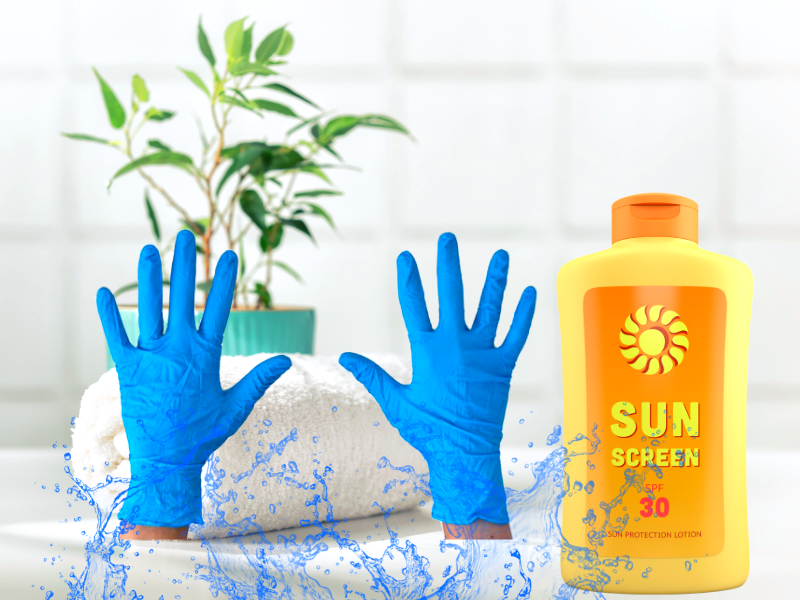
Nail salons play a crucial role in educating their clients about the potential risks of UV exposure during gel manicure sessions. By informing clients about the dangers of UV radiation and the importance of skin protection, salons foster a safer environment. Recommendations such as applying a broad-spectrum SPF sunscreen to the hands before a gel manicure or opting for LED lamps can significantly reduce the risk of premature aging and skin cancer. This educational effort helps clients make informed decisions about their beauty treatments, aligning health safety with aesthetic goals.
Innovations in Nail Salon Safety: Beyond LED Lamps
While switching to LED lamps, which emit less harmful UV radiation, is a recommended safer alternative, further innovations in nail salon safety continue to evolve. For instance, the development of fingerless gloves that can be worn during the curing process shields the skin from direct exposure to UV rays. These gloves protect the skin while exposing the nails for precise gel curing. This simple yet effective solution can significantly reduce the potential risk of skin damage and skin cancer associated with UV nail dryers.
Additionally, there is a growing emphasis on the formulation of gel nail polishes that cure with less exposure to UV light, or that can be cured with LED lamps, which are considered safer. Manufacturers are also exploring nail polishes that incorporate ingredients that can potentially protect the skin from UV damage. These advancements in product formulation and protective accessories represent a proactive approach to enhancing safety in nail care, ensuring that beauty routines do not compromise skin health.
Protective Measures Against UV Nail Lamp Exposure
To minimize the risks associated with UV nail lamps, dermatologists recommend several precautions. Wearing fingerless gloves from materials blocking UV radiation or applying a broad-spectrum sunscreen to the hands can significantly reduce UV exposure. These simple steps can protect the skin from potential damage while still allowing the enjoyment of gel manicures.

Exploring Safer Alternatives: LED Lamps
LED lamps present a safer alternative to traditional UV nail lamps. These devices also cure gel polish but use LED light, which emits narrower UV wavelengths and operates at faster curing times, thus reducing the overall exposure to UV rays. Switching to an LED lamp can be a practical choice for those concerned about the skin darkening and health risks associated with conventional UV nail lamps.
The Role of Regular Manicures in UV Exposure
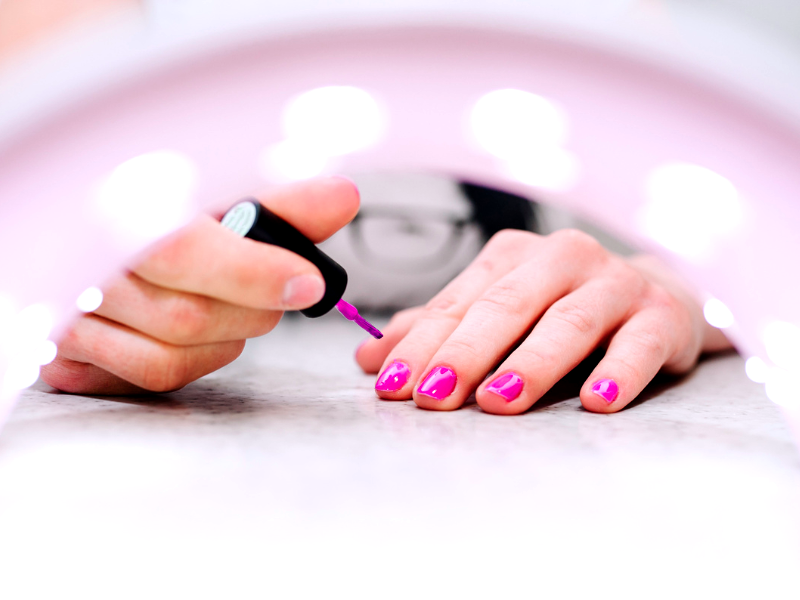
Frequent visits to the nail salon increase cumulative UV exposure, elevating the potential risks of skin damage. For individuals who undergo regular manicures, it's crucial to implement protective measures consistently. Additionally, alternating between gel manicures and regular polish can decrease the frequency of UV exposure, helping to mitigate long-term skin health risks.
Summary
While UV nail lamps are effective for curing gel polish, they pose potential risks for skin darkening and damage due to their emission of UVA rays. Protective measures such as wearing UV-blocking gloves or sunscreen can help reduce these risks. For those seeking safer alternatives, LED lamps offer a viable option with less UV exposure. Awareness and precaution are key in balancing the benefits of gel manicures with the need to protect skin health.
FAQ
How often should I use sunscreen when getting a gel manicure?
It's advisable to apply a broad-spectrum sunscreen with an SPF of 30 or higher to your hands 20 minutes before exposure to UV nail lamps during every gel manicure session.
Are there specific types of gloves recommended for protection against UV nail lamps?
Yes, fingerless gloves specifically designed to block UV radiation are recommended. These gloves should cover the skin around the nails while leaving the nails exposed for the manicure.
Can regular nail polish be cured under UV or LED lamps?
Regular nail polishes do not require curing under UV or LED lamps as they air dry. These lamps are specifically designed for gel-based products that need UV light to cure.
